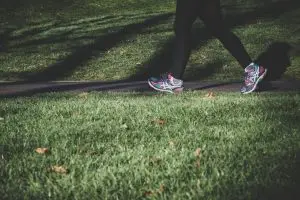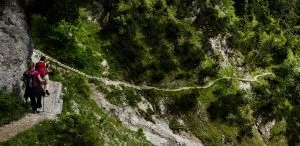10 Ways To Crush Fatigue During And After A Hike

We all know the feeling. You’ve been hiking for hours, you’re exhausted, and all you can think about is lying down and taking a nap. But there are still miles to go before you reach your campsite, and you can’t afford to take a break now. So how do you keep going when all you want to do is collapse?
Quick Links
Why is Hiking So Tiring?
There are various reasons why hiking can be so tiring. Instead of naming them all, I’ll paint a picture of what a long day on the trail looks like. You start out early in the morning when it’s still cool. You feel refreshed and like you can take on the world. But as the day goes on, the sun gets higher and hotter, and you find yourself sweating buckets. Literal buckets. You stop for a few short breaks to eat and drink, but mostly you just keep plodding along, one foot in front of the other, one pole in front of the other. All while lugging around a heavy backpack full of gear.
By the time you make it to your campsite, you’re absolutely exhausted. Your legs are trembling, your feet are throbbing, and your head is pounding. You’ve been hiking for hours, and all you want to do is collapse into your tent and sleep for a week.
But now that you’re finally at your campsite, it’s time to set up camp, cook dinner, and get ready for tomorrow. So even though you’re tired, there’s still work to be done.
10 Ways To Prevent Fatigue During And After A Hike
The best way to prevent hiking fatigue is to be prepared. That means having the right gear, packing enough food and water, and knowing your limits. Here are 10 ways to stay energized during and after a long day on the trail:
1. Invest in Good Gear
If you’re serious about hiking, then you need to invest in some good gear. That includes a quality backpack, comfortable shoes, and the right clothing. You don’t need to break the bank, but wearing stuff like jeans or cotton t-shirts is a recipe for disaster. Instead, invest in some quick-drying synthetic materials that will wick away sweat and keep you cool.
2. Make Sure You’re Properly Fueled
Before you even set out on your hike, make sure you have a good meal in your stomach. A mix of carbs and protein will give you the energy you need to make it through the day. And don’t forget to pack some snacks for on the trail. Granola bars, nuts, and fruit are all great options.
Personally, I like complex carbs before a hike because they provide long-lasting energy. Oatmeal, brown rice, or quinoa are all great choices. I know certain people will have certain dietary restrictions, though, so do what works best for you.
3. WATER!
This cannot be overstated. Dehydration is one of the main causes of fatigue, and it’s easy to become dehydrated when you’re sweating all day. So make sure you’re drinking plenty of water, and even consider carrying a filter or purifier in case you run out. If you haven’t gone hiking much, be prepared to run out of water more quickly than you think.
Dehydration can lead to fatigue, headaches, and cramping. And on a hot day, it can even lead to heatstroke. So make sure you’re drinking plenty of water, and don’t wait until you’re thirsty to start chugging. Read our guide on exactly how much water to bring on a hike.
4. Take Breaks
If you start to feel tired, take a break. It’s better to hike a little slower and take more breaks than it is to push yourself until you’re completely exhausted.
Plus, one benefit of taking a break is that you get to enjoy the scenery. Hiking is supposed to be fun, after all! Some of my best photos while out hiking came because I was just too tired and needed a break. Just so happened that the views were incredible from where I sat down. Case in point:
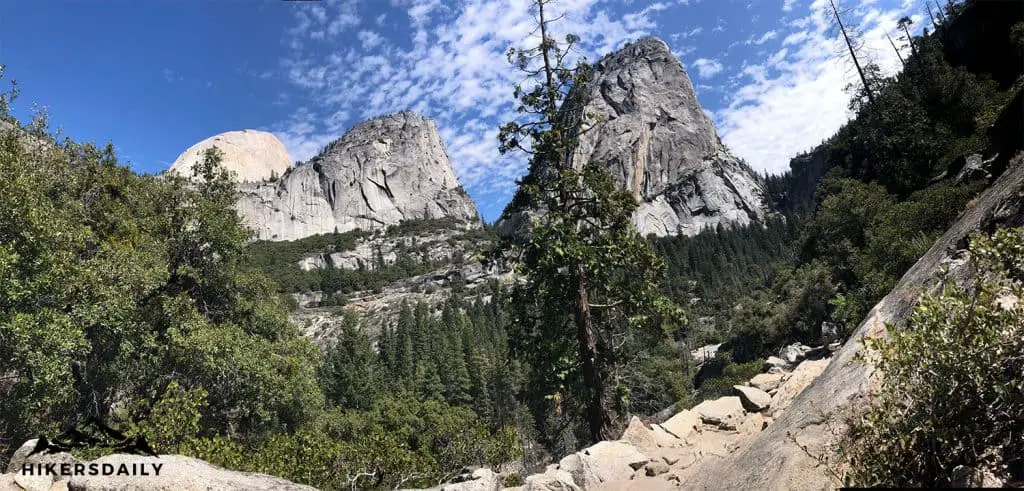
5. Pace Yourself
One of the biggest mistakes hikers make is going too fast at the beginning of the day. They start out with a ton of energy and end up running out of steam before they even hit the halfway mark. (Me, when I started).
Instead, start out slow and steady, and gradually increase your pace as the day goes on. If this is something you struggle with, then try setting a timer for every 15 minutes or so. When the timer goes off, check your pace and make sure you’re not going too fast.
Something that actually helped me was C25K. That’s the Couch to 5k jogging program. Anytime I had tried jogging in the past, I would burn out faster than I could count to 100. But with C25K, I slowly increased my running time and distance over the course of 8 weeks. And by the end, I was able to run a 5k without stopping.
It was a great way to get used to running at a slower pace, and I think it helped me when it came to pacing myself on hikes.
The same principle applies to hiking. If you try to go too fast at the beginning, you’ll only make it harder on yourself. But with C25K, it starts off very slow, and gradually builds up to running 5k – over time, not overnight.
6. Use Trekking Poles
Trekking poles are a great way to take some of the strain off your legs and feet. If you’ve read a few of my other articles, you’ll notice a trend here. I think trekking poles are probably the most underrated piece of gear for hikers. They make such a big difference, especially on long hikes.
In addition to taking some strain off your legs, they also help with balance, which can be important on rocky or slippery trails. If you don’t have trekking poles, then consider using a walking stick.
7. Avoid Alcohol the Night Before
I know, I know, this one is hard to hear. But alcohol will dehydrate you and make it harder to sleep. And a bad night’s sleep will only make you more tired the next day. So it’s best to avoid drinking the night before a big hike. Plus, going hiking while hungover isn’t too fun, anyway.
8. Bring a Friend
Hiking with a friend is not only more fun, but it can also help you stay motivated when you’re feeling tired. Plus, if one of you starts to falter, the other can help out. It’s just like having a gym partner. You have someone to push you, spot you, and, most importantly, keep you accountable.
9. Focus on Your Breathing
When you start to feel exhausted, it’s easy to start breathing shallowly. But this can actually make you feel more tired. Instead, focus on taking deep breaths and filling your lungs all the way. This will help improve your oxygen levels and give you a much-needed energy boost.
10. Embrace the Struggle
Lastly, just remember that hiking can get tough. The fact that it’s challenging is what makes it so much more rewarding in the end. Learn to embrace the struggle, and don’t give up.
What About Muscle Fatigue While Hiking?
One of the main causes of muscle fatigue while hiking is dehydration. When you’re sweating all day, you lose electrolytes and fluids, which can lead to cramping and fatigue. So make sure you’re drinking plenty of water, and consider carrying a sports drink or electrolyte tablets to replenish your system.
Another cause of muscle fatigue is overuse. If you’re not used to hiking, your muscles will get tired quickly. To avoid this, start out slowly and build up your mileage gradually. Think of it as working out at the gym. You don’t start lifting 100 lb. dumbells on your first day. Instead, you start with lighter weights and gradually work your way up.
Finally, improper footwear can also lead to muscle fatigue. Wearing shoes that don’t fit well or that don’t provide enough support can cause your feet and legs to tire quickly – this is where actual hiking boots and shoes serve their purpose so well.
Stretching Before The Hike
Stretching before and after your hike can also help prevent muscle fatigue. Stretching is proven to increase blood flow and flexibility, both of which can help your muscles recover from the rigors of hiking. A good stretching routine should focus on the major muscle groups used in hiking: the calves, hamstrings, quads, and hips.
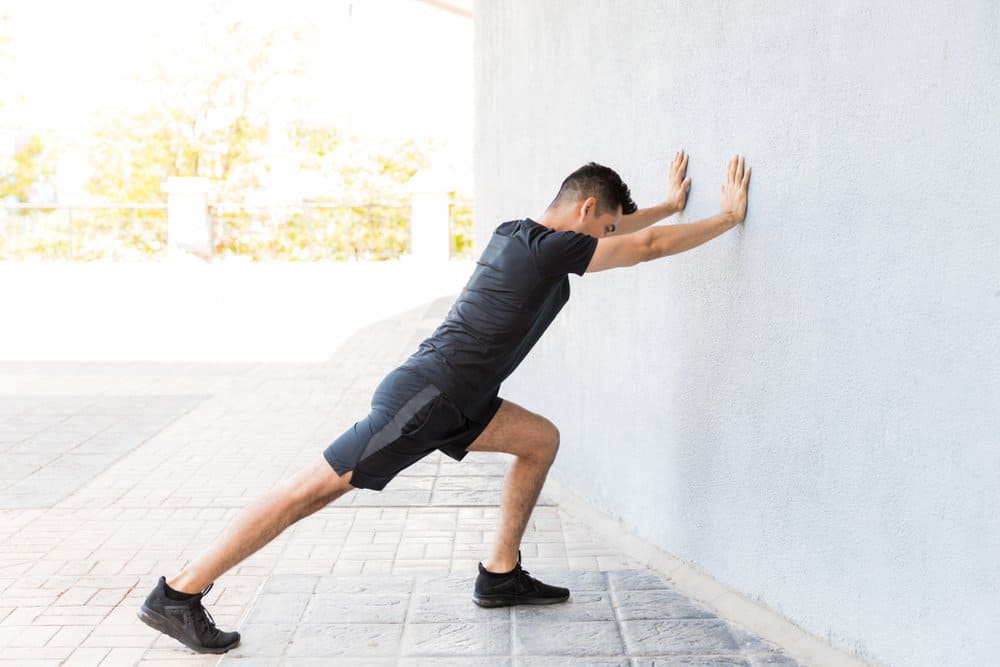
To stretch your calves, stand with your feet shoulder-width apart and your hands on your hips. Then, lean forward and place your hands on a wall. Keeping your heels on the ground, press your hips forward until you feel a stretch in your calves. Hold for 30 seconds and repeat 2-3 times.
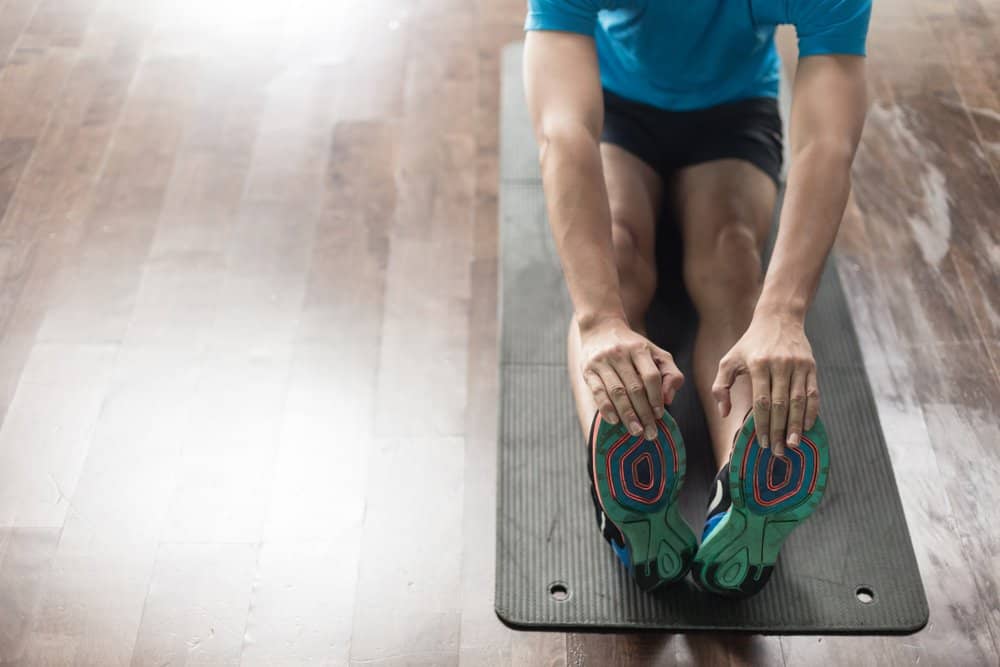
For your hamstrings, sit on the ground with your legs straight out in front of you. Reach for your toes, keeping your back straight. If you can’t reach your toes, then just try to get as close as you can. You should feel a stretch in the back of your legs. Hold for 30 seconds and repeat 2-3 times.

To stretch your quads, stand with your feet shoulder-width apart and place your right hand on a wall or a tree. Bend your left knee and bring your heel up to your butt. Hold for 30 seconds and repeat on the other side.
Finally, to stretch your hips, sit on the ground with your legs crossed. Then, slowly lean forward until you feel a stretch in your hips. Hold for 30 seconds and repeat 2-3 times.
Improve Your Walking and Hiking Form
Believe it or not, your walking and hiking form can also affect your muscle fatigue. Slouching forward or walking with a hunched back puts extra strain on your muscles and can lead to fatigue. Instead, focus on walking tall with your shoulders back and your head up. This will help you breathe more easily and use your muscles more efficiently.
You should also try to swing your arms while you walk. This may seem strange, but it actually helps you maintain a good walking pace. Just make sure not to swing your arms too much – keep them at about 90 degrees from your body.
Finally, try to relax while you’re walking and hiking. Don’t clench your fists or tighten your muscles. This will only make you tired more quickly. Instead, focus on taking deep breaths and relaxing your body as much as possible.
Is Hiking in Hot and Humid Weather Harder?
Yes. And there are two primary reasons for this. First, when it’s hot and humid, your body has to work harder to cool itself off, which uses up more energy. Second, sweat doesn’t evaporate as quickly in hot, humid weather, so you don’t get the cooling effect that you do in dryer conditions.
Since I moved to Texas, I’ve hiked in some pretty hot and humid weather, and let me tell you, it is not fun. The first time I went hiking in the heat, I was absolutely miserable. I was sweaty, my clothes were sticking to me, and I felt like I was going to pass out. But after a few hikes, I got used to it and now I don’t even mind hiking in the heat – within reason, of course.
What Can You Do to Make Hiking in Hot Weather Easier?
There are a few things you can do to make hiking in hot weather more bearable. First, start early in the morning when it’s cooler. Second, take breaks often and drink plenty of water. Third, wear loose, light-colored clothing. And finally, don’t forget the sunscreen!
Even if you follow all of these tips, hiking in hot weather can still be tough. Just take it slow and steady, and you’ll be fine. Or, just avoid it altogether and hike in the cooler months. Your call.
Conclusion
I won’t lie to you. The reality is that even if you practice all these tips, there will still be challenging hikes. But that’s what makes hiking so rewarding – the feeling of accomplishment when you reach the top, even when your muscles and your mind are screaming at you to turn around.
So get out there and hike! And if you ever need a hiking buddy, just let me know. I’m always up for a good adventure. 😜

